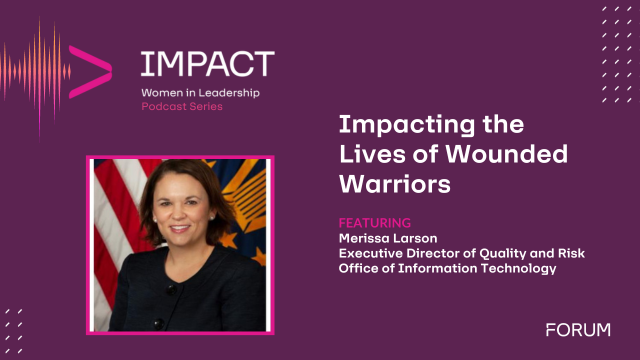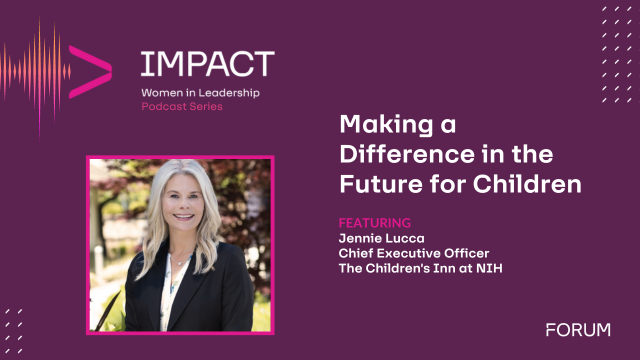HIMSS. The Health IT trade show to end all trade shows. Over 40,000 professionals descend upon a city and turn it into a seething, roiling mass of bright colors, loud sounds, boastful claims and technobabble. It’s like Burning Man, except it’s safe to eat the candy. In this month’s article, Mike Farahbakhshian suggests what to check out at this year’s HIMSS without burning out. Suggested drink pairing: Mojitos!
 Happy February, Meaningless Useketeers! February is upon us. Despite being the shortest month, February is action packed. It’s Black History month; Valentine’s Day candy and decorations invade our lives; and the lowest-scoring and possibly the most boring Super Bowl in history was played.
Happy February, Meaningless Useketeers! February is upon us. Despite being the shortest month, February is action packed. It’s Black History month; Valentine’s Day candy and decorations invade our lives; and the lowest-scoring and possibly the most boring Super Bowl in history was played.
Oh, and there’s a little conference we like to call HIMSS… because that’s what it’s called. HIMSS is like Comic-Con for Health IT nerds. Like Comic-Con, HIMSS can be overwhelming. Last year, 43,979 Health IT professionals of all stripes attended. It’s easy to get lost among the chaos. What does a Health IT professional do?
Thankfully, I’ve taken the time to obsess over lessons learned from past HIMSS conferences. I also mulled over what HIMSS 2019 will bring, and offer some suggestions on what to check out. Let’s dive in.
 Cerner’s booth has grown with every HIMSS. I believe by 2025 it will secede and declare itself a sovereign nation. Cerner is going to have a lot to say about its EHR modernization at VA. They will be proud of the fact that their scheduling solution supplanted Epic’s MASS project at VA. I am sure they will also have a skillful defense to Department of Defense reports saying MHS GENESIS is riddled with cyber security vulnerabilities. If that’s something that interests you, by all means, have that discussion.
Cerner’s booth has grown with every HIMSS. I believe by 2025 it will secede and declare itself a sovereign nation. Cerner is going to have a lot to say about its EHR modernization at VA. They will be proud of the fact that their scheduling solution supplanted Epic’s MASS project at VA. I am sure they will also have a skillful defense to Department of Defense reports saying MHS GENESIS is riddled with cyber security vulnerabilities. If that’s something that interests you, by all means, have that discussion.
However, if that’s not your bag, know this: Cerner’s little village has good coffee and shorter lines than the convention center coffee places. If Cerner is going to take over the Federal Health IT world, free coffee with short lines is the improved outcome we need.

 The Interoperability Showcase is, bang for the buck, one of the best places to visit at HIMSS. There isn’t a large Federal presence at HIMSS – a little over 5%, based on last year’s statistics. For us in the Federal Health IT community, the Interoperability Showcase is a great example of seeing how Government-regulated standards work with private industry to improve outcomes for citizens. Government agencies such as Veterans Affairs, the Agency for Healthcare Research and Quality (AHRQ), the Centers for Disease Control (CDC), the Centers for Medicare/Medicaid Services (CMS), and multiple state health agencies will be demonstrating at the showcase. It’s a great place for companies to reaffirm connections with their customers, as well as make new connections and see what applied Federal Health IT looks like. Self-promotion: VA will be demonstrating MyHealtheVet, which By Light develops, at the Interoperability Showcase.
The Interoperability Showcase is, bang for the buck, one of the best places to visit at HIMSS. There isn’t a large Federal presence at HIMSS – a little over 5%, based on last year’s statistics. For us in the Federal Health IT community, the Interoperability Showcase is a great example of seeing how Government-regulated standards work with private industry to improve outcomes for citizens. Government agencies such as Veterans Affairs, the Agency for Healthcare Research and Quality (AHRQ), the Centers for Disease Control (CDC), the Centers for Medicare/Medicaid Services (CMS), and multiple state health agencies will be demonstrating at the showcase. It’s a great place for companies to reaffirm connections with their customers, as well as make new connections and see what applied Federal Health IT looks like. Self-promotion: VA will be demonstrating MyHealtheVet, which By Light develops, at the Interoperability Showcase.
 Interoperability hinges upon good standards, and the release of FHIR 4.0 will lead to a lot of interesting talks at HIMSS. More self-promotion: By Light’s own John Moerhke will be delivering “FHIR Implementations for Personal Connected Health” and I strongly suggest you attend. Most of my article on FHIR was lifted from a presentation John wrote, and this one promises to be even better. FHIR has a lot to offer everyone, so make sure you’re up to speed.
Interoperability hinges upon good standards, and the release of FHIR 4.0 will lead to a lot of interesting talks at HIMSS. More self-promotion: By Light’s own John Moerhke will be delivering “FHIR Implementations for Personal Connected Health” and I strongly suggest you attend. Most of my article on FHIR was lifted from a presentation John wrote, and this one promises to be even better. FHIR has a lot to offer everyone, so make sure you’re up to speed.
 Speaking of FHIR, Blue Button 2.0 is going to be the sleeper issue of HIMSS 2019. Blue Button’s functionality currently is used by Federal patient portals like Tricare On-Line and MyHealtheVet to enable patients to download their own health data. Blue Button 2.0 works very similarly to Argonaut (now FHIR-US-Core). The Blue Button 2.0 API is fully FHIR enabled and allows beneficiaries to map claims data to Mobile applications and patient portals. This is going to be important for two reasons:
Speaking of FHIR, Blue Button 2.0 is going to be the sleeper issue of HIMSS 2019. Blue Button’s functionality currently is used by Federal patient portals like Tricare On-Line and MyHealtheVet to enable patients to download their own health data. Blue Button 2.0 works very similarly to Argonaut (now FHIR-US-Core). The Blue Button 2.0 API is fully FHIR enabled and allows beneficiaries to map claims data to Mobile applications and patient portals. This is going to be important for two reasons:
- As we move from fee-for-service to value-based care, it will be critical that providers

With 70% of Americans supporting Medicare for All, What is “Very Likely for 2020,” Alex? be able to map complex encounter and chart data, medical and lab orders, and claims information in a way that allows value to be computed.
- Medicare for All is going to take center stage in the 2020 elections, with the Democratic frontrunner very likely to embrace it as a key platform. Should he or she win, we can expect Medicare overhauls that will make the Blue Button 2.0 API even more critical for improving outcomes among all citizens.
Find out more about the future of Blue Button when Mark Scrimshire, inventor of Blue Button and Blue Button 2.0, speaks at HIMSS.
 Blue Button and Medicare overhauls are part of the evolution of Healthcare from fee-for-service to value-based care. HIMSS has predicted that the move to value-based care, and accountable care organizations (ACOs), is a major theme for 2019. As the field moves toward value-based care, we have discovered that social determinants impact this move. For example, if you’re doing all the right things to treat your asthma, but your income limits you to living in an older building with mold or old carpet, your asthma won’t get better despite following doctor’s orders.
Blue Button and Medicare overhauls are part of the evolution of Healthcare from fee-for-service to value-based care. HIMSS has predicted that the move to value-based care, and accountable care organizations (ACOs), is a major theme for 2019. As the field moves toward value-based care, we have discovered that social determinants impact this move. For example, if you’re doing all the right things to treat your asthma, but your income limits you to living in an older building with mold or old carpet, your asthma won’t get better despite following doctor’s orders.

Including social context is something that providers and payers need to consider to ensure improved outcomes, rather than a shampoo-rinse-repeat cycle of interventions and complications that we see in our existing fee-for-service model.
That model isn’t going away for a while. CMS is looking to implement MACRA mandates to shift from fee-for-service to accountable care, but it will take time and effort until we are fully value-based. I recommend going to this session to see the current state of our Federal Health system and fee-for-service versus accountable value-based care.
 Core to any value-based care system is Big Data and a robust analytics pipeline. Doing things like cross-referencing your health problems with social determinants takes a lot of computing power, as does analyzing your Blue Button data. By examining your Healthcare encounters, pharmacy orders, lab orders, lifestyle information, etc., a good Big Data analytics pipeline will do more for enabling improved outcomes than any flashy buzzword like Blockchain. HIMSS as an organization sees the value of big data to enable value-based care. If you show up early to HIMSS, I strongly recommend attending the Big Data Symposium. If you show up later, I recommend this session.
Core to any value-based care system is Big Data and a robust analytics pipeline. Doing things like cross-referencing your health problems with social determinants takes a lot of computing power, as does analyzing your Blue Button data. By examining your Healthcare encounters, pharmacy orders, lab orders, lifestyle information, etc., a good Big Data analytics pipeline will do more for enabling improved outcomes than any flashy buzzword like Blockchain. HIMSS as an organization sees the value of big data to enable value-based care. If you show up early to HIMSS, I strongly recommend attending the Big Data Symposium. If you show up later, I recommend this session.
 Analytics of course are only as good as the metrics and measures we collect. The National Committee for Quality Assurance (NCQA) has released their 2019 edition of the Healthcare Effectiveness Data and Information Set (HEDIS). This set includes updated and additional measures. Topically relevant ones include opioid abuse and immunization related measures, which are sorely needed while we are in the grip of opioid epidemics and extremely dangerous measles outbreaks. Thanks, antivaxxers. Thanks a lot.
Analytics of course are only as good as the metrics and measures we collect. The National Committee for Quality Assurance (NCQA) has released their 2019 edition of the Healthcare Effectiveness Data and Information Set (HEDIS). This set includes updated and additional measures. Topically relevant ones include opioid abuse and immunization related measures, which are sorely needed while we are in the grip of opioid epidemics and extremely dangerous measles outbreaks. Thanks, antivaxxers. Thanks a lot.

A. Midlife crisis.
 But since we live in a dystopian hell where antiquated diseases spread due to lack of herd immunity, let’s talk about population health at HIMSS. I strongly recommend attending this session, but bear in mind that what we as a society need are consistent thresholds for herd immunity. I’ve been trying to find consistent numbers on immunity thresholds for diseases. Wikipedia has some numbers for a variety of diseases. (For example, the herd immunity threshold for measles is listed as 92-95%.) However, the cited source is a study on smallpox that is a dead link on the CDC website. The World Health Organization lists 93-95% as a threshold for measles, and other sites cite a NIAID range that is much larger … however, the community immunity page on the NIAID website is a dead link. Healthcare isn’t just about interventions and shuffling data around. Sometimes it’s about providing a consistent, easily searchable source of authoritative information accessible by the citizen.
But since we live in a dystopian hell where antiquated diseases spread due to lack of herd immunity, let’s talk about population health at HIMSS. I strongly recommend attending this session, but bear in mind that what we as a society need are consistent thresholds for herd immunity. I’ve been trying to find consistent numbers on immunity thresholds for diseases. Wikipedia has some numbers for a variety of diseases. (For example, the herd immunity threshold for measles is listed as 92-95%.) However, the cited source is a study on smallpox that is a dead link on the CDC website. The World Health Organization lists 93-95% as a threshold for measles, and other sites cite a NIAID range that is much larger … however, the community immunity page on the NIAID website is a dead link. Healthcare isn’t just about interventions and shuffling data around. Sometimes it’s about providing a consistent, easily searchable source of authoritative information accessible by the citizen.
 Speaking of accessibility, telehealth is going to continue to be a mainstay of health IT and I’m glad to see the HIMSS19 conference will talk less about the promise of telehealth, and instead will talk more about overcoming real obstacles in implementing telehealth. This includes setting up metrics for success and boring but necessary process models. Finally, the rubber will hit the road. My advice on anything telehealth? Stay away from the booths with the flashy hardware and cool demos. Go instead to the boring sessions about standards, metrics and process models. Telehealth, unlike blockchain or AI, has stopped being a toy and has started becoming a tool. Tools are useful with proper guidance and dangerous without it. Don’t eat the frosting – eat the telehealth cake.
Speaking of accessibility, telehealth is going to continue to be a mainstay of health IT and I’m glad to see the HIMSS19 conference will talk less about the promise of telehealth, and instead will talk more about overcoming real obstacles in implementing telehealth. This includes setting up metrics for success and boring but necessary process models. Finally, the rubber will hit the road. My advice on anything telehealth? Stay away from the booths with the flashy hardware and cool demos. Go instead to the boring sessions about standards, metrics and process models. Telehealth, unlike blockchain or AI, has stopped being a toy and has started becoming a tool. Tools are useful with proper guidance and dangerous without it. Don’t eat the frosting – eat the telehealth cake.
 Finally, in a post-#metoo world I’d be remiss in not mentioning the Women in Interoperability and Women in Health IT roundtables. I would also urge you to check out how Health IT interacts with women’s health and reproductive health issues, such as the session “Creating a Connected Pregnancy.” More suggestions for inclusive topics and sessions to attend may be found here.
Finally, in a post-#metoo world I’d be remiss in not mentioning the Women in Interoperability and Women in Health IT roundtables. I would also urge you to check out how Health IT interacts with women’s health and reproductive health issues, such as the session “Creating a Connected Pregnancy.” More suggestions for inclusive topics and sessions to attend may be found here.
 So, there you have it. You’ll notice I stayed clear of buzzwords like Blockchain or precision medicine. Maybe next year, or the year after, they will be something worth focusing on at HIMSS. For now, we have a lot of work to do, with a greying population, a boom of millennials entering their prime years, surveillance capitalism harvesting more data than it knows what to do with, and epidemic outbreaks of preventable disease and opioid abuse. All of these challenges float in a choppy political sea where single-payer Medicare for All may be the future … or it may not. There are a lot of changes afoot, and what we need now are tools more so than toys. It is only with solid processes that we can use technology to deliver true value-based care, in whatever form it will be.
So, there you have it. You’ll notice I stayed clear of buzzwords like Blockchain or precision medicine. Maybe next year, or the year after, they will be something worth focusing on at HIMSS. For now, we have a lot of work to do, with a greying population, a boom of millennials entering their prime years, surveillance capitalism harvesting more data than it knows what to do with, and epidemic outbreaks of preventable disease and opioid abuse. All of these challenges float in a choppy political sea where single-payer Medicare for All may be the future … or it may not. There are a lot of changes afoot, and what we need now are tools more so than toys. It is only with solid processes that we can use technology to deliver true value-based care, in whatever form it will be.
One final piece of advice: Against your better judgement, you’re going to go to that party. You know the one I’m talking about. The one with the after-after-afterparty. I’m not going to stop you, but remember, the only thing that will help you be functional the next day…













